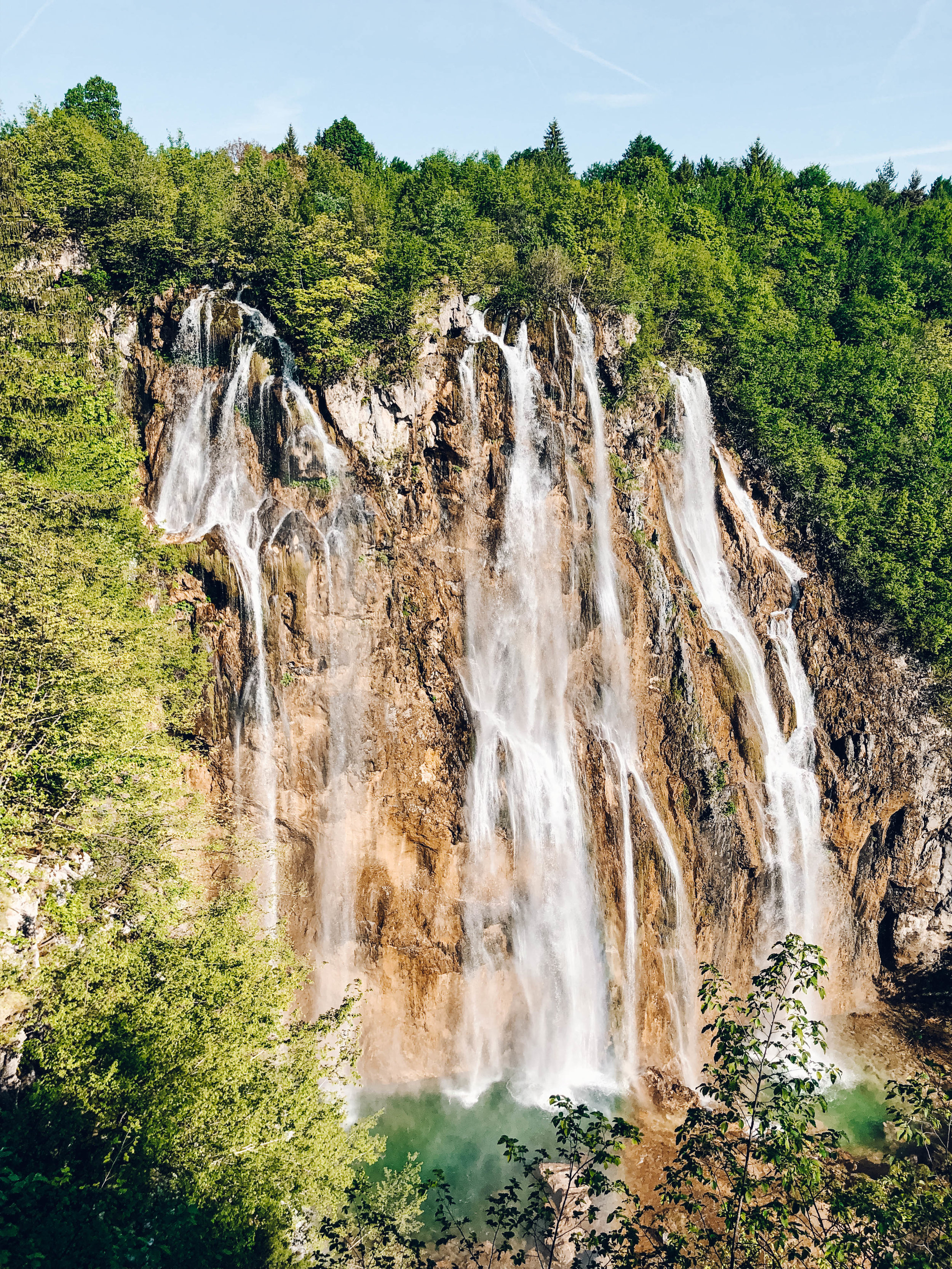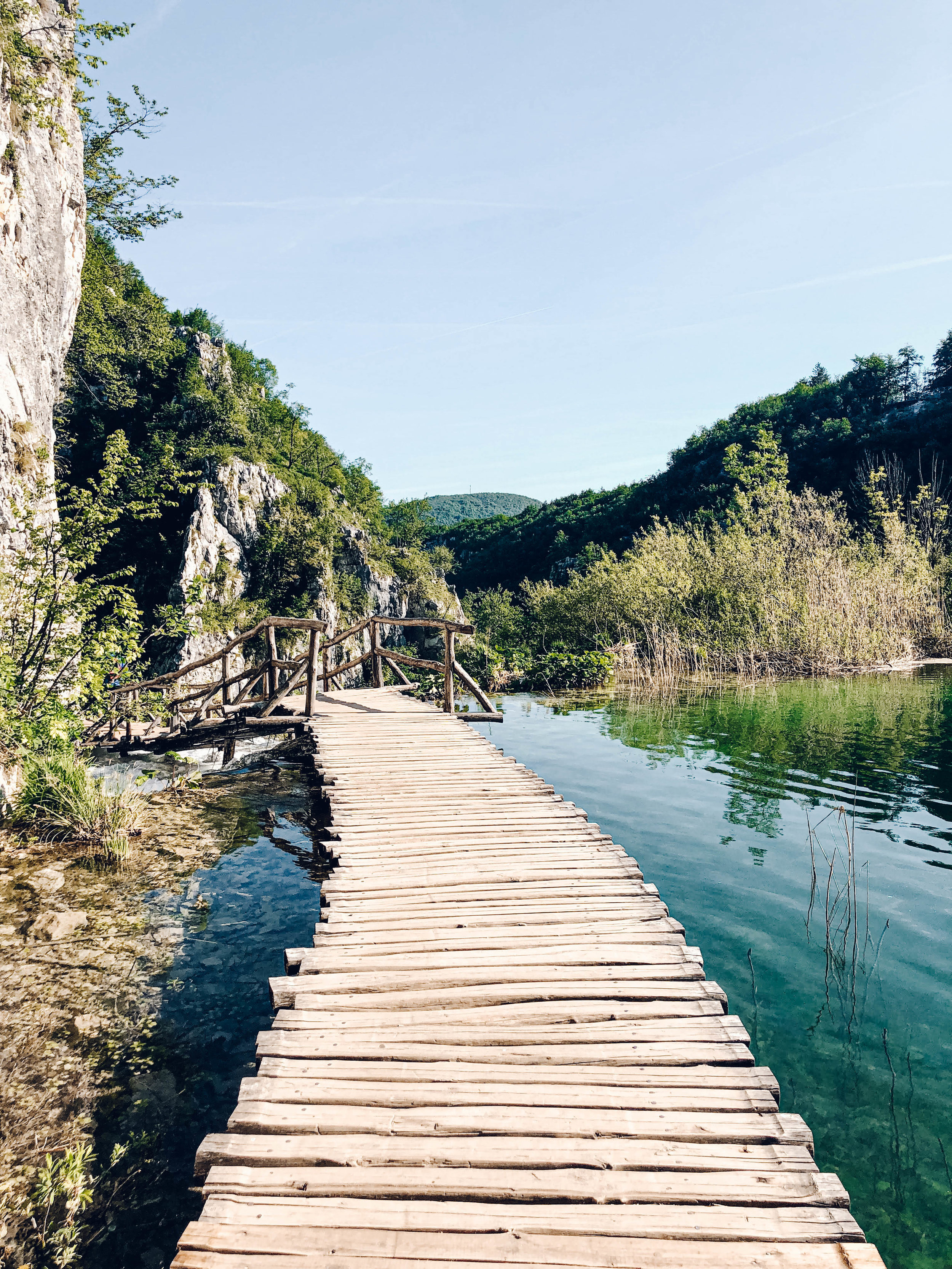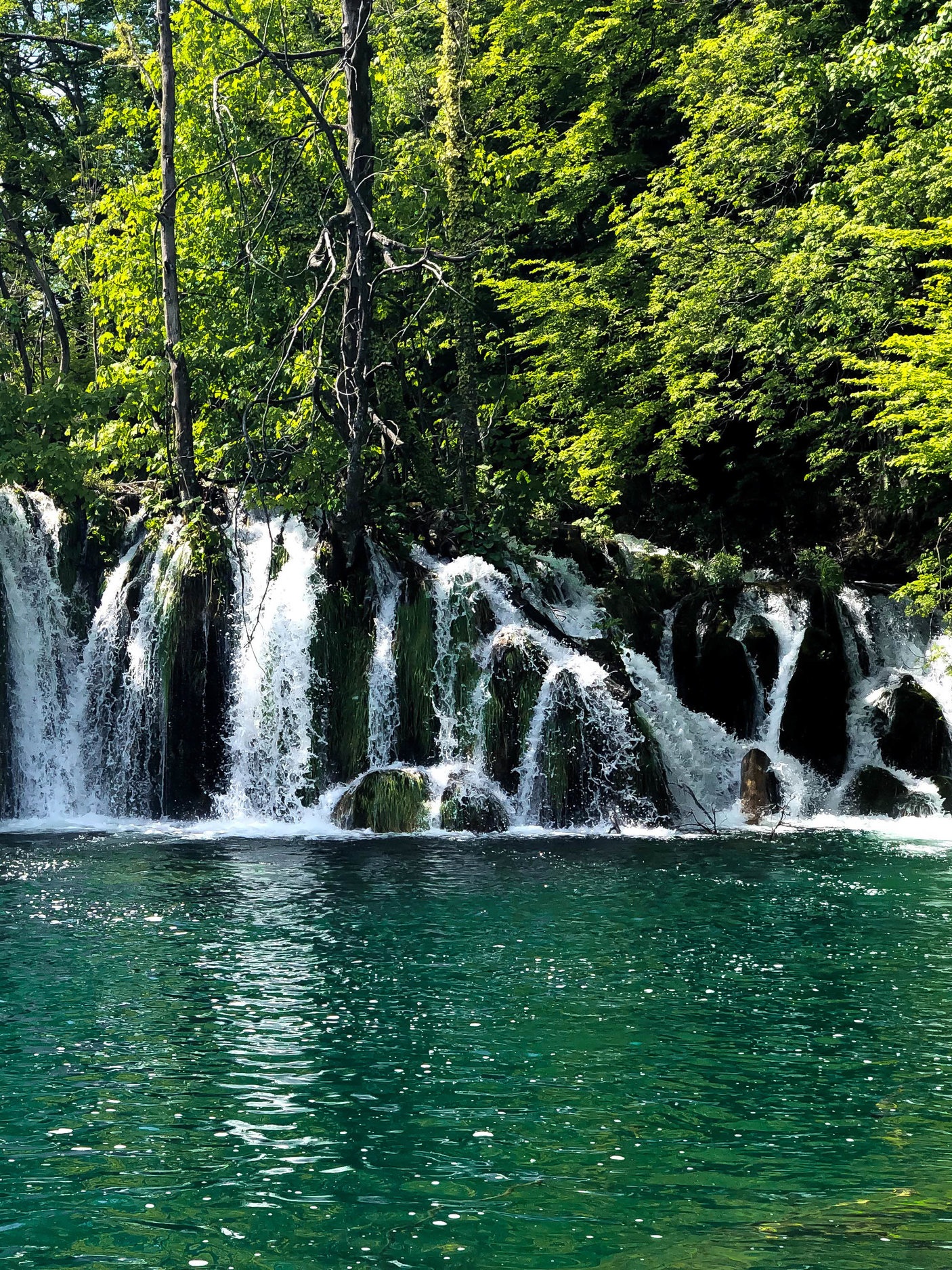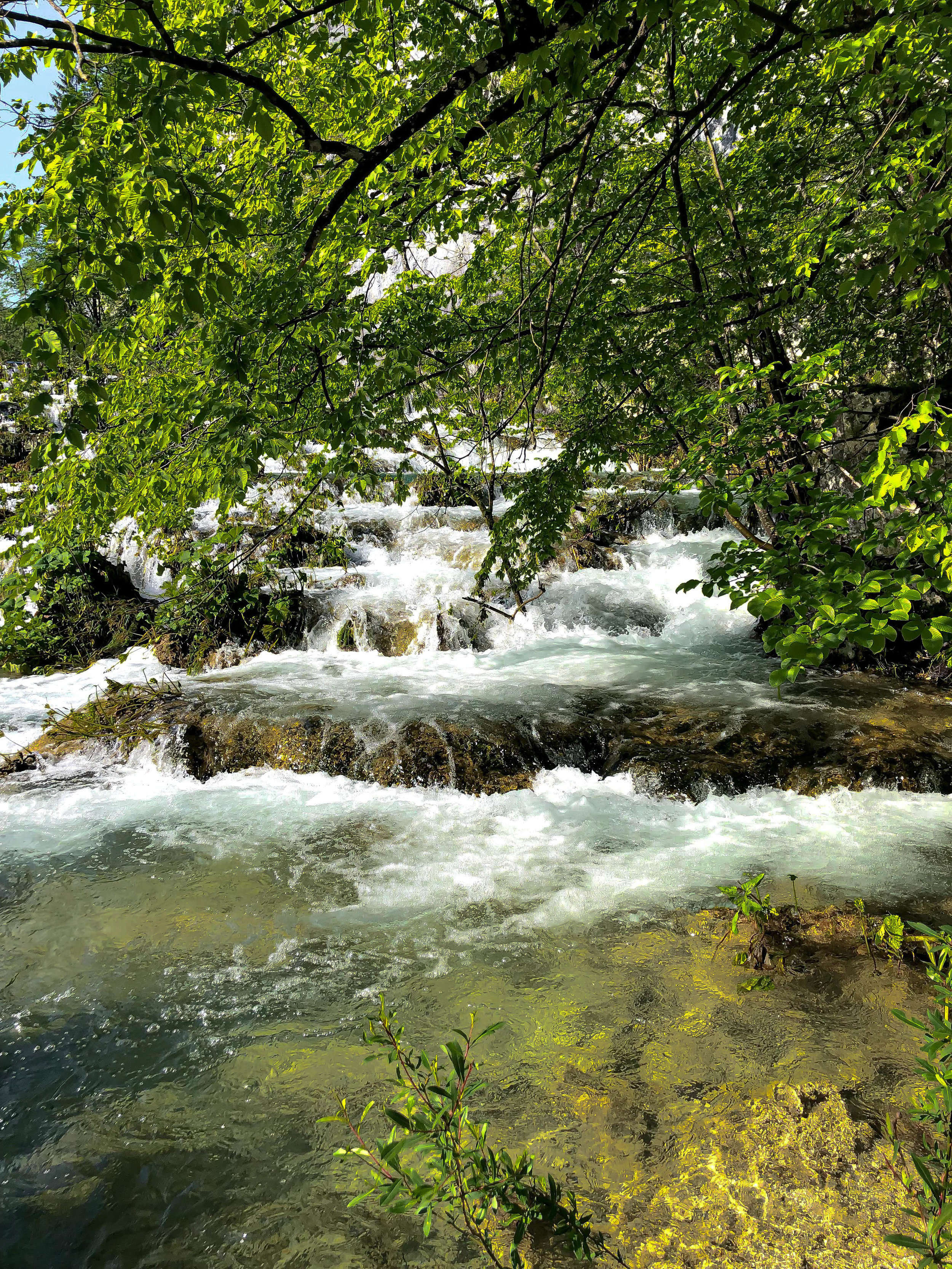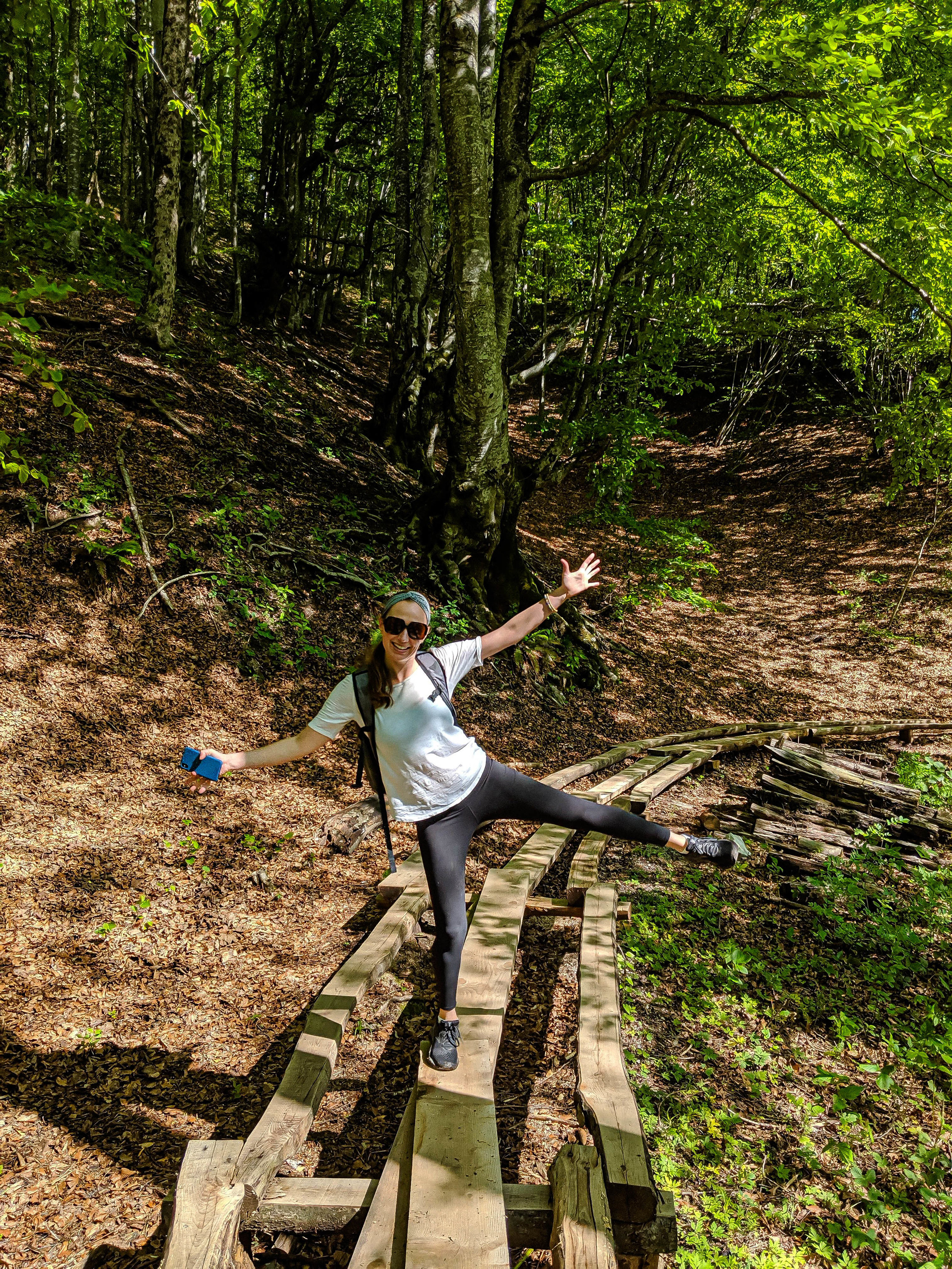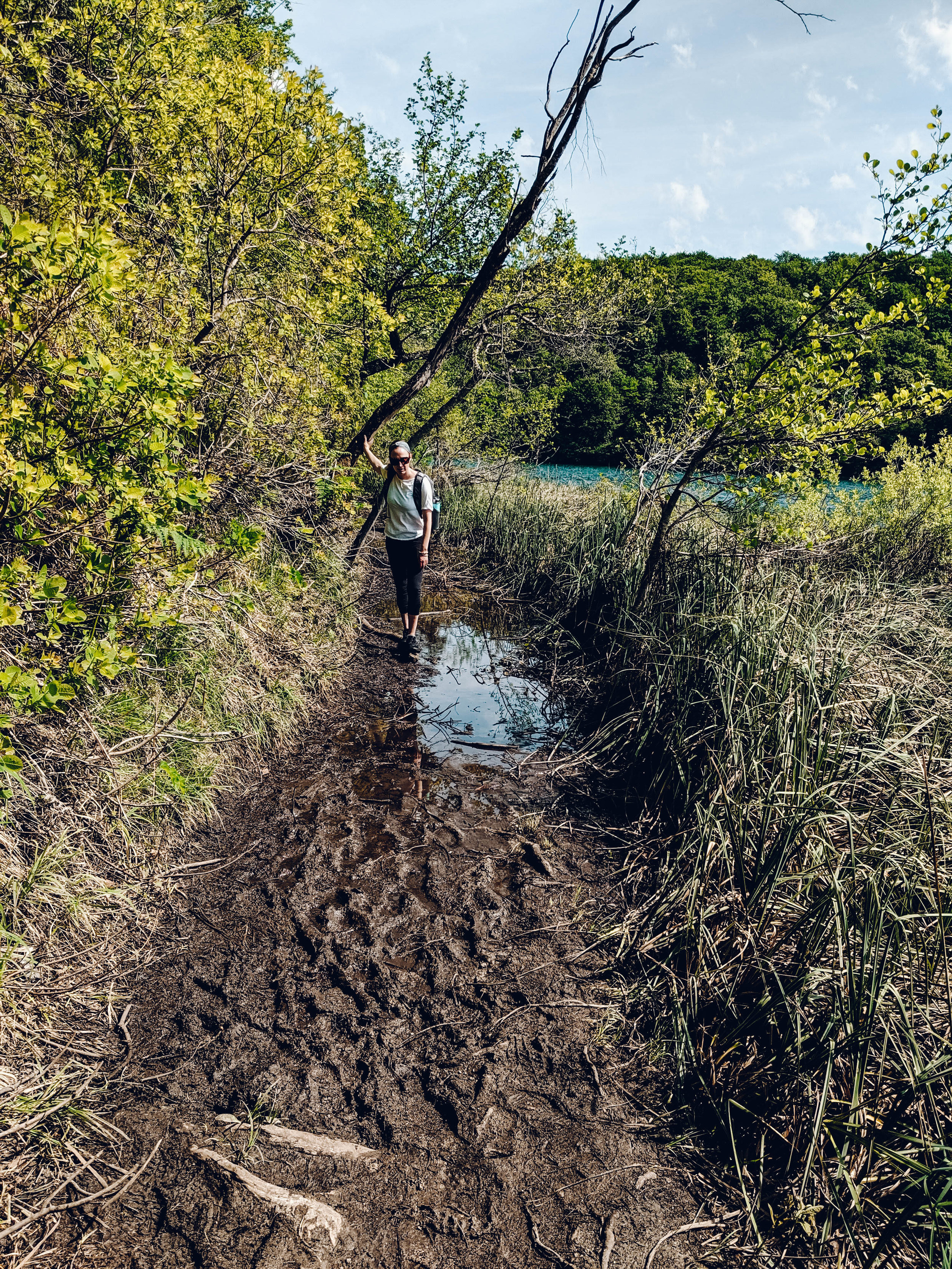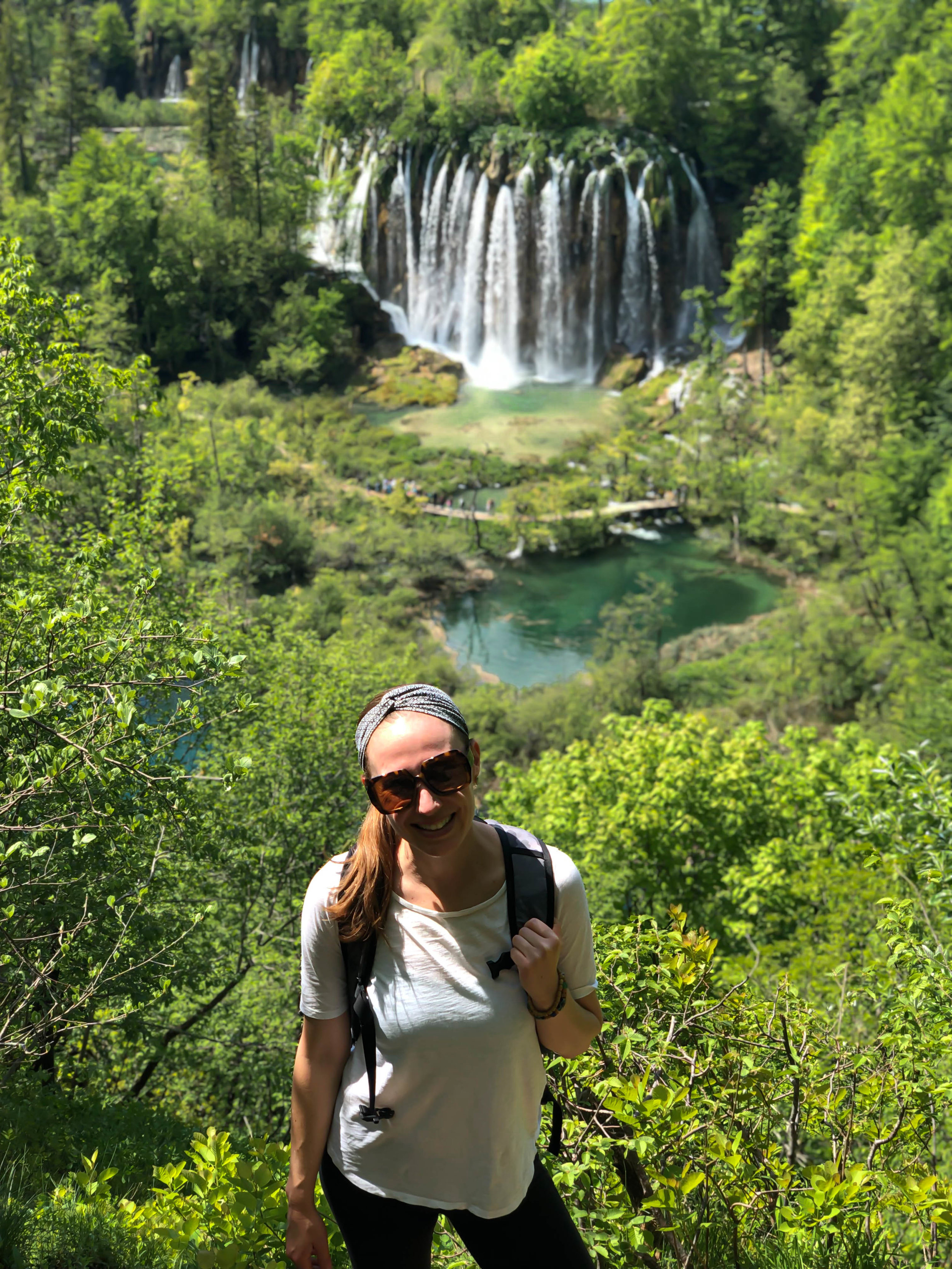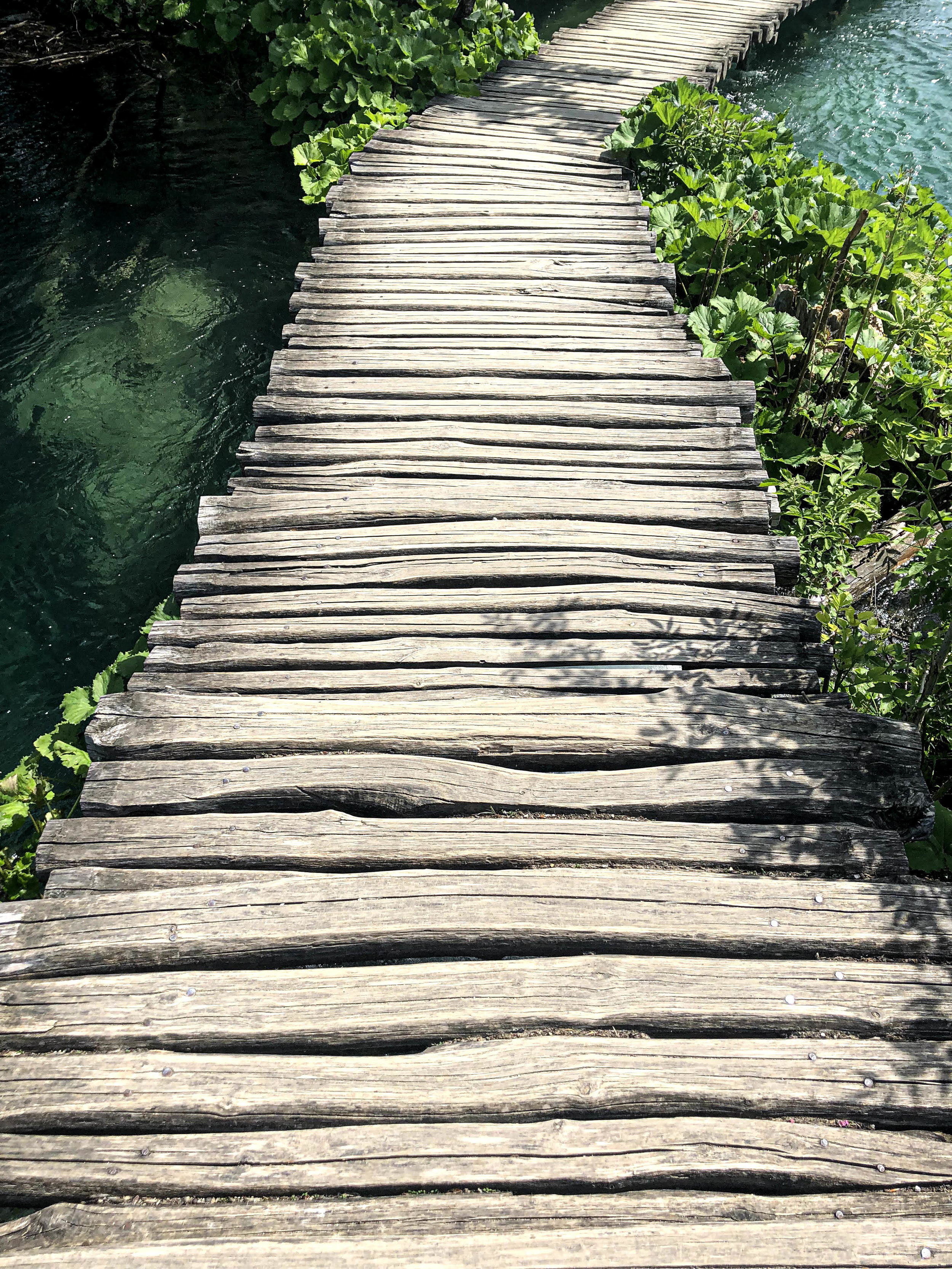Part 3 - Chasing Waterfalls: Krka and Plitvice National Parks, Croatia
It’s a truth universally acknowledged that any time an elder millennial takes a photo of a waterfall, it will have a caption by TLC’s classic song from their CrazySexyCool album. I am not exempt from this truth. Raise your hand if you still to this day sing “Jason Waterfalls” instead of “chasing waterfalls.” Also, can I trademark the term “elder millennial?” Does anyone even know what that term means?
As you may have guessed, this post is all about waterfalls. Or more specifically, where to find them in Croatia. Plitvice Lakes National Park may get all the fame and glory (the nickname for this park is the poetic “Land of the Falling Lakes,” after all), but it’s not the only national park in Croatia with numerous cascades and clear turquoise pools. Krka National Park is beautiful in its own right. Like siblings, one park may feel like it is constantly living in the others shadow, and while on the surface both nature reserves might seem similar, they each offer a difference experience. So which to choose? It all depends on what you are looking for.
We visited these parks on separate days, but I thought it made sense to combine them in one post. No surprise, it’s another long one - but read through the whole thing, if only for the pictures. Croatia believes there is no such thing as too many waterfalls, and I believe there is no such thing as too many photos of waterfalls.
Krka National Park
We set off from Zadar bright and early, en route to Krka National Park. I was excited for Krka. For once, I wasn’t bothered by the slightly gloomy skies. If anything, rain gives forests and waterfalls an ethereal, mysterious edge. The greens look sharper against gray clouds, and the mist rising from the falls intermingles with the fog.
But first, some quick logistics:
When people talk about the “Krka waterfalls,” the one they are generally thinking of Skradinski buk. The waterfall here is certainly the most well-known and popular (these are the waterfalls you’ll see on all the Krka promotional posters), and while it is spectacularly beautiful, I was surprised to learn that there is actually far more to the park than Skradinksi. Krka National Park has dozens of waterfalls that all flow from the river, but since most people visit Srandinksi and leave, there are whole swaths of the park that are completely left out of guidebooks.
Krka National Park is big, and not entirely self-contained like it’s brother Plitvice. The park actually has five separate entrances from different villages in the Krka River area: Skrandi, Lozovac, Roski Slap, Krka Monastery and Burnum. None of these entrances are connected, though, which means you have to leave one area to get to the other. It’s not possible to hike from Skrandi to Roski Slap, for example. All of the entrance are accessible by car, but buses and tour groups only go to a couple of them. We ended up visiting three out of the five.
Skradin and Skradinski buk
Skradin is only about an hour’s drive away from Zadar, so we made good time and got to the park entrance by about 9am. Well, technically, the park entrance here is a dock. There is a ferry that takes visitors from the village of Skradin, through the Krka River canyon, and to Skradinski buk. We arrived just as the ferry was about to set off, and found the last few spots up on the bow of the crowded boat. The Lonely Planet says that there can be long queues for the ferry boats in the summer months, so that’s something to keep in mind. It was 9am in early May and that first boat out was packed.
Once you dock, you’ll hear the waterfall before you can see it. This part of the park is pretty self-explanatory: there is an hour-long loop that follows paths and boardwalks connecting all the little islands and emerald pools. Skradinski buk itself isn’t exactly one big waterfall, but rather a series of 17 smaller cascades that gradually descend in a series of steps and pools, finally crashing down into the wide, lower lake.
The trail winds up to several fantastic lookout points, where you can really see the different gradients of color in the water (some places it was a bright turquoise, other places a deep seafoam shade), constantly churning from the coursing white water. This whole area reminded me of Semuc Champey, which is a series of stepped limestone pools deep in central Guatemalan jungle. Skradinski buk had a similar feel, mossy green and lush.



The river is filled with lazily swimming fish and croaking frogs, and since the boardwalk weaves over all the small ponds, we were able to get an aerial view of the water life below. If you hear a throaty, chirping sound, lean in for a closer look. You might be able to see one of the camouflaged singing frogs, their cheeks ballooning in and out while they chatter away in the water reeds. The lower lake is a popular summer swimming area, and it was a bit unfortunate that the weather was still a little too cold to go for a swim. I imagine it would be crowded, but still fun, to swim with the waterfalls in that clear, natural pool during the summer. On the plus side, we were able to get some great photos of the main falls devoid of people, making it look and feel a bit more remote than it really was.
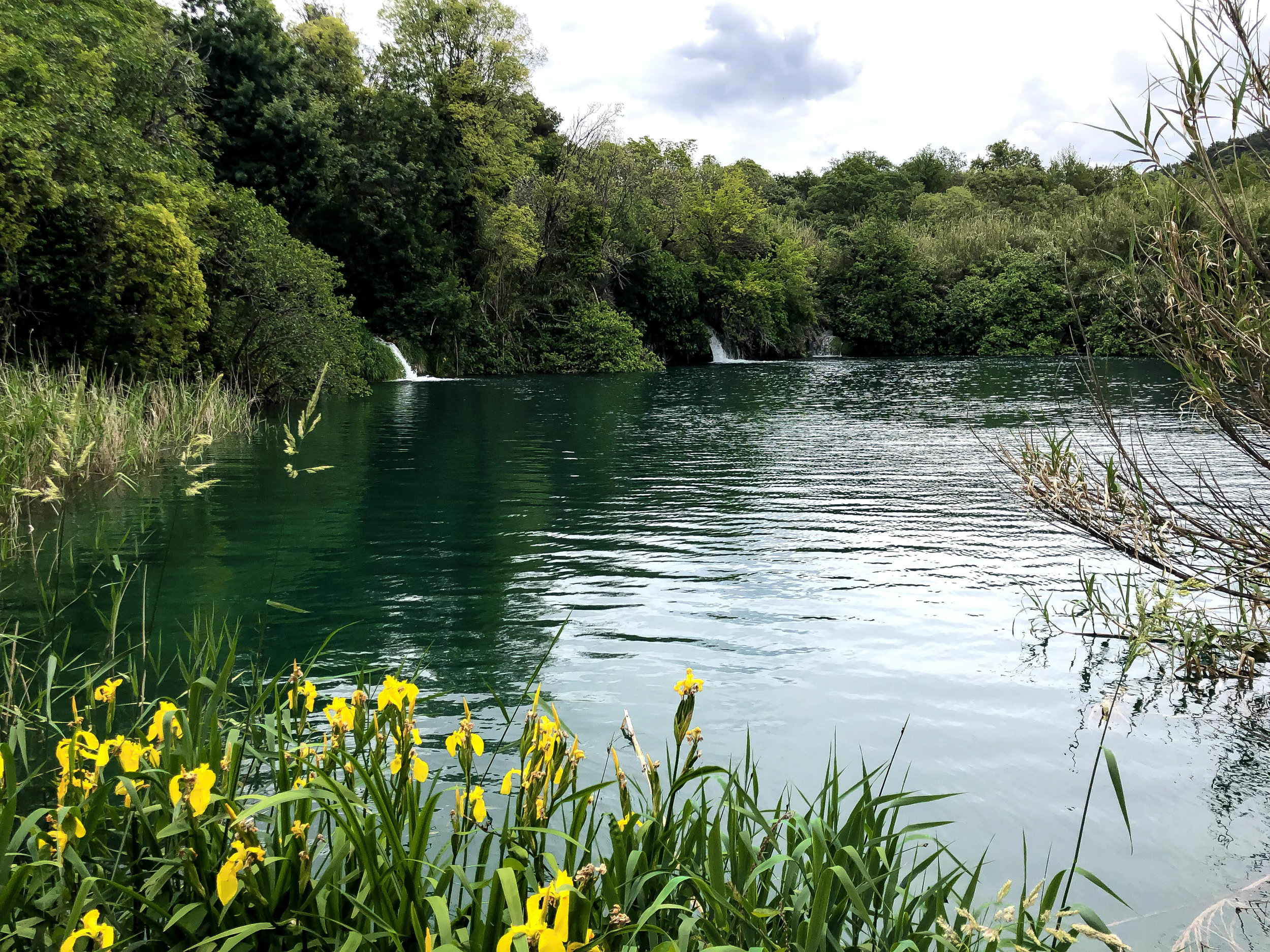

Instead of taking the ferry back to Skradin, we decided to walk. There is a wide, easy path through the canyon, where you can take in the natural beauty of the place without being crammed in with 50 other people. It’s only about an hour’s walk, fairly flat, and highly recommended. The ferry only comes every half hour and the ride is 20 minutes, so it evens out to about the same travel time, anyway!
And this is where Krka National Park ends for most people. If you read the guide books and most blogs, you’d think that was it. But there is much more to see within Krka National Park than Skradisnki buk. You just need a car to do it.
Roski Slap
Roski Slap is the 6th largest waterfall in the Krka river chain. Fair warning: after visiting Skradinski buk, Roski Slap will feel underwhelming. I just realized when writing this post that I didn’t even take a picture. However, what is decidedly more interesting than the waterfall itself is the long series of short, stepped pools that feed into this final cascade.

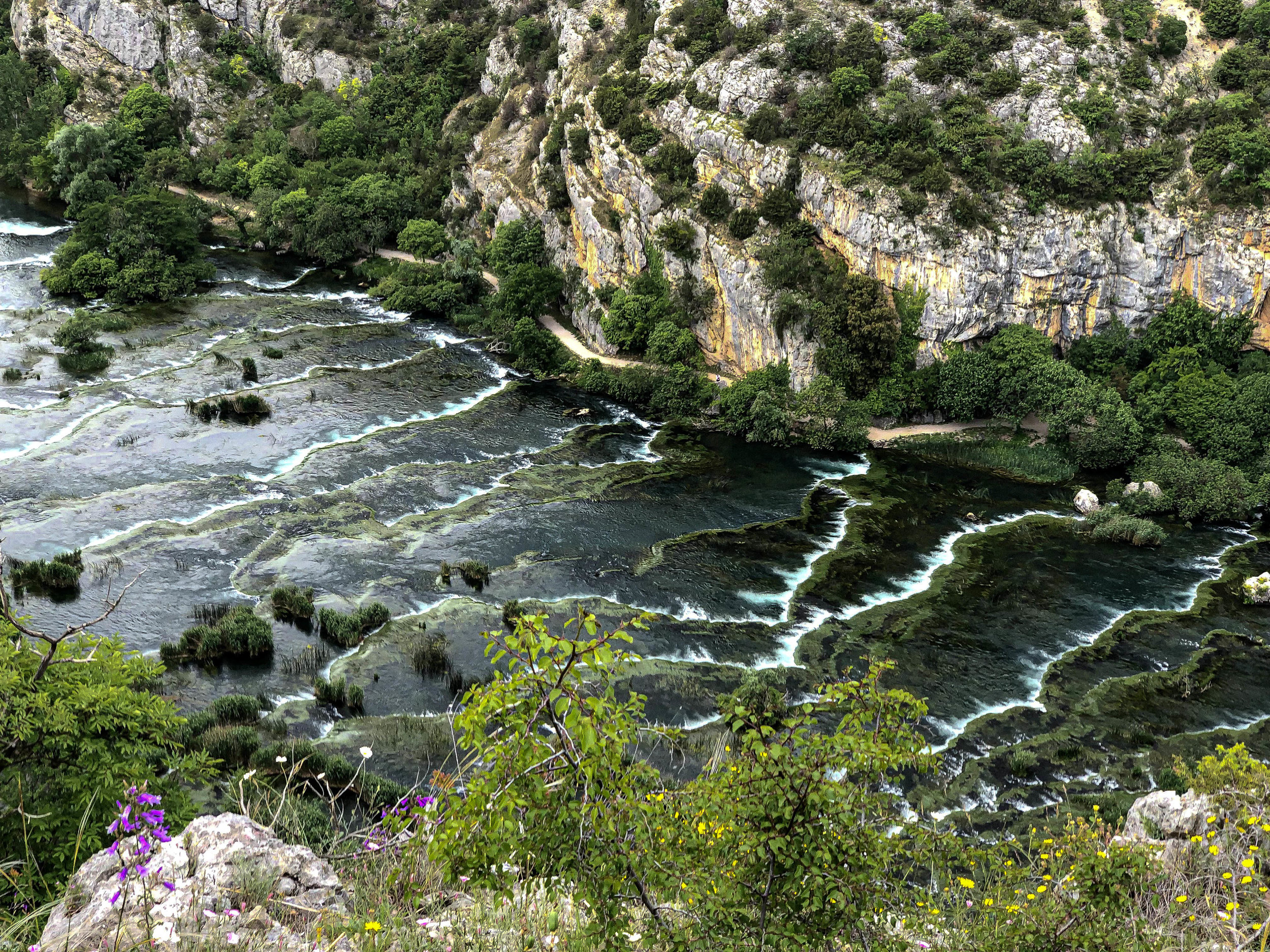
The local’s call these travertine barriers “the necklaces,” and once you get a look at them from above, you can see why. It looks like the long neck of the canyon is dripping in jewelry, strands of elegant, pearl-like necklaces of water decorating the gorge. The Krka river here gurgles and flows in small streams, and the whole area is peacefully beautiful. And significantly less crowded. I believe it’s possible to take a ferry from Skrandiski to Roski, but you’d need to book through a tour group.
Once we parked, one of the park rangers came up to us to explain the lay of the land and the different hikes in the area. Personalized map service! We decided to head up the canyon to the Oziđana Cave, a recently discovered cave that was inhabited by humans during the Late Stone Age. It was 600 steps up creaky wooden stairs to get there, but it’s worth it. The birds-eye view of the necklaces and the surrounding valley and canyons is impressive, even while I was gasping for air.
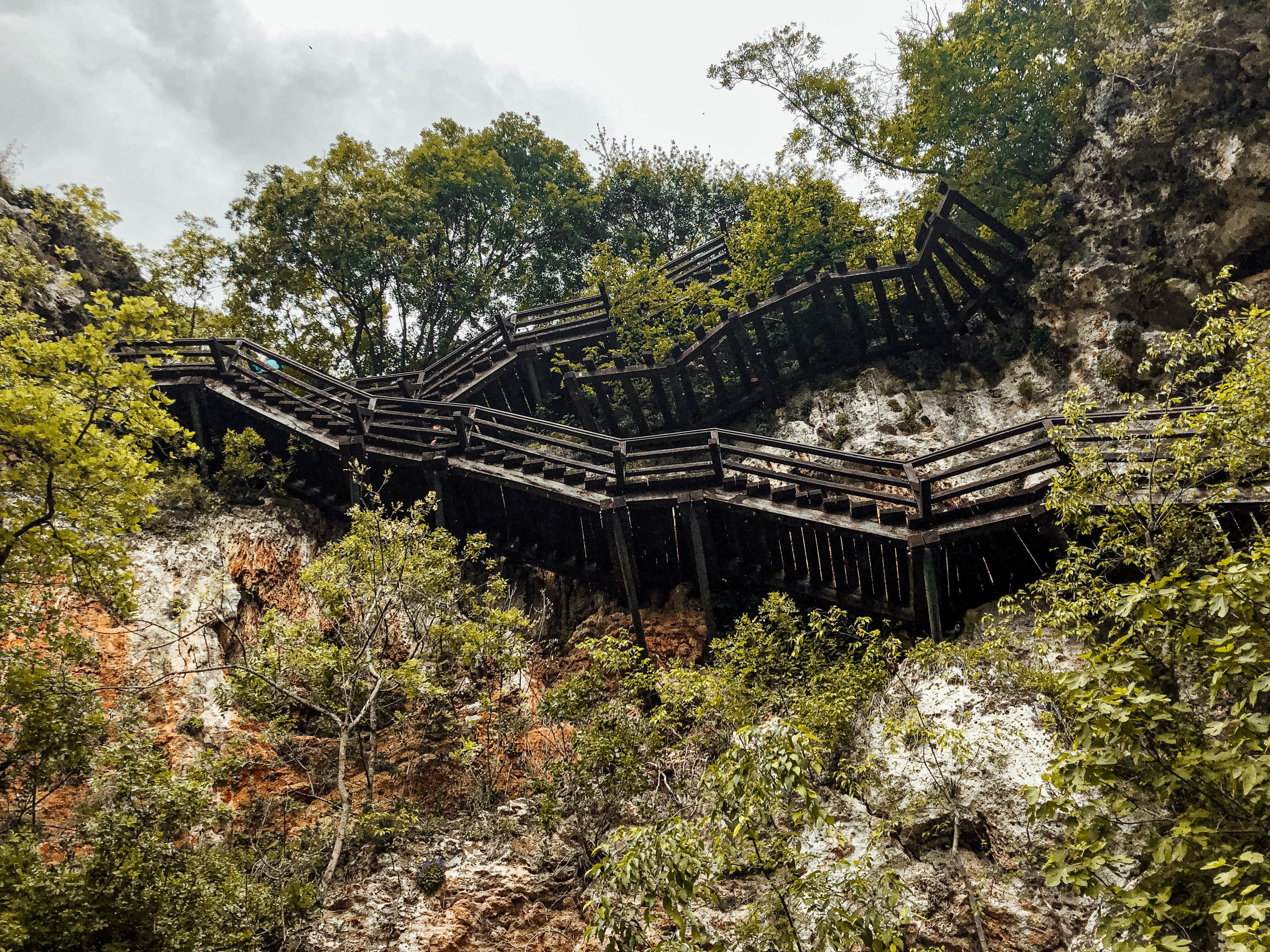
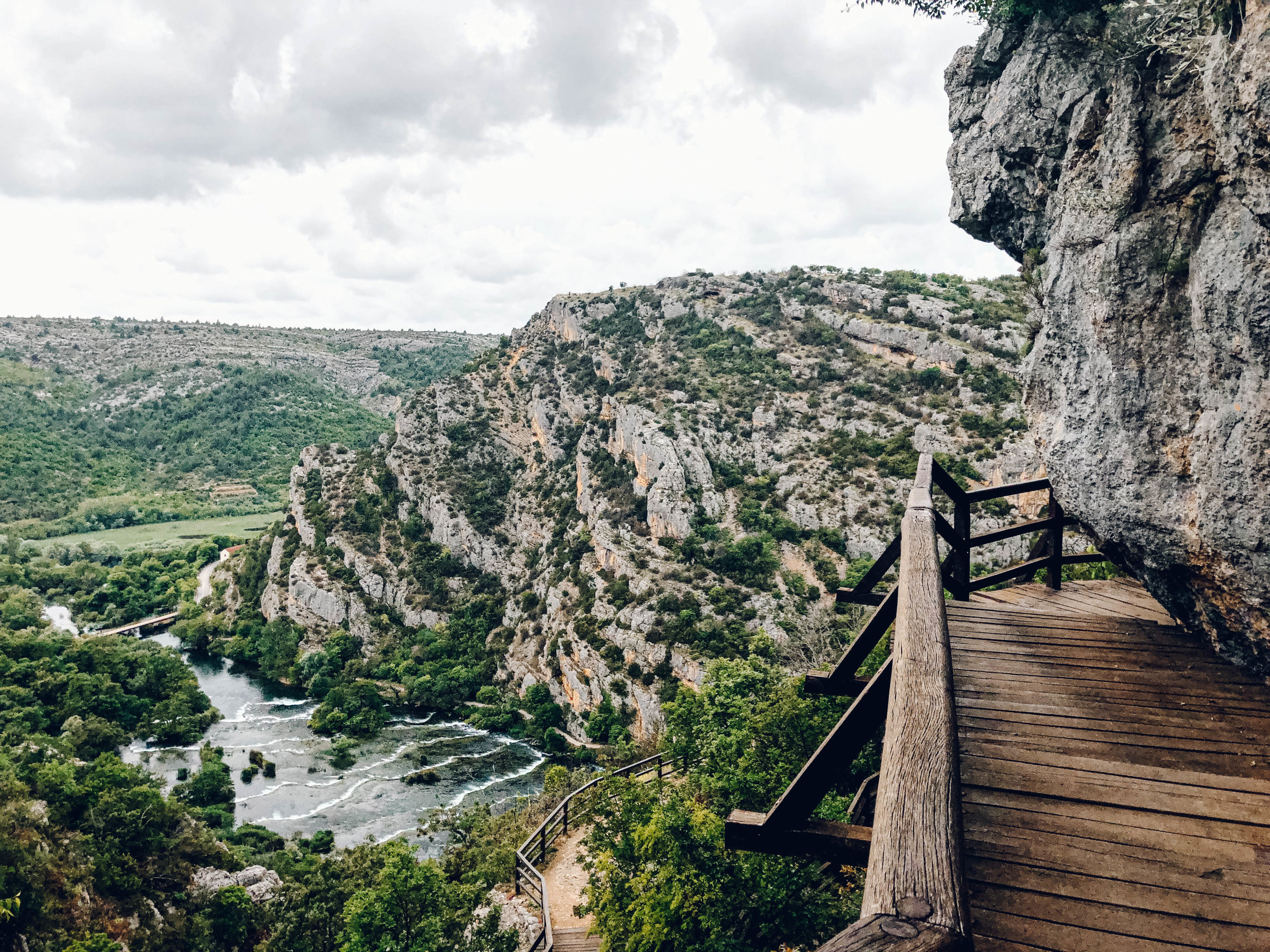
Now - why all the Croatia guidebooks choose to highlight a few medieval mills on the banks of the falls ( they are trying to make these old defunct mills a big tourist attraction) instead of incredible archeological finds like the Oziđana cave is really beyond me. I feel like Regina George: “Stop trying to make the mills happen. They are not going to happen.” These caves, on the other hand, were formed naturally by the sea, and excavations have shown that the cave was used extensively for human shelter for 3000 years. Archeologists found ceramic dishes, stone tools such as knives and millstones, and animal bones, all of them dating between 5000 BC and 1500 BC. They also found the skeletons of two children curled up in the fetal position, dating from the Neolithic age.
To continued the personalized park service, a ranger was stationed at the front of the cave to give a little historical background - and to warn us not to startle the bats, and not to be startled by the replicas of humans in the dark corners. Roski slap hands-down gets the best ranger service award. It’s not that large, so exploring the cave takes all of 10 minutes, but it’s very cool to be in a place inhabited by some of the very first humans.
Manojlovacki slap
This is where we vear way off the radar. If Roski slap was significantly less crowded than Skradinski buk, Manojiovacki is desolate. There are no tour buses, certainly no rangers to check your tickets or give you a personalized guide, and barely any signage at all. Manojiovack waterfall is actually the tallest out of all the falls in the park, and located in the middle of a lush canyon. It’s a bit far from the other entrances (this entrance is near Burnum), and since there is no other transport, a car is the only way to get here.
It’s secluded, and impressive. From what I could tell, there were plenty of trails that lead down to the bottom of the falls and the pools below, but by this point we had actually hiked quite a bit more than we had anticipated that day (since everything I read about Krka only described the easy 45-minute loop of Skradinski!). We actually clocked about 10 miles. Our dogs were barking, so I was quite happy to simply stick with the trail to the viewpoint. But since there are no signs, it can be tricky to find your way to the Manojlovski lookout point. My best piece of advice is to take the trail to the right. If you go left, you’ll eventually start making your way down. Needless to say, we went left and had to hoof it back up a steep trail to get back on track. I loved this area of the park. It felt wild and remote, almost like we just stumbled across these magical waterfalls all on our own.
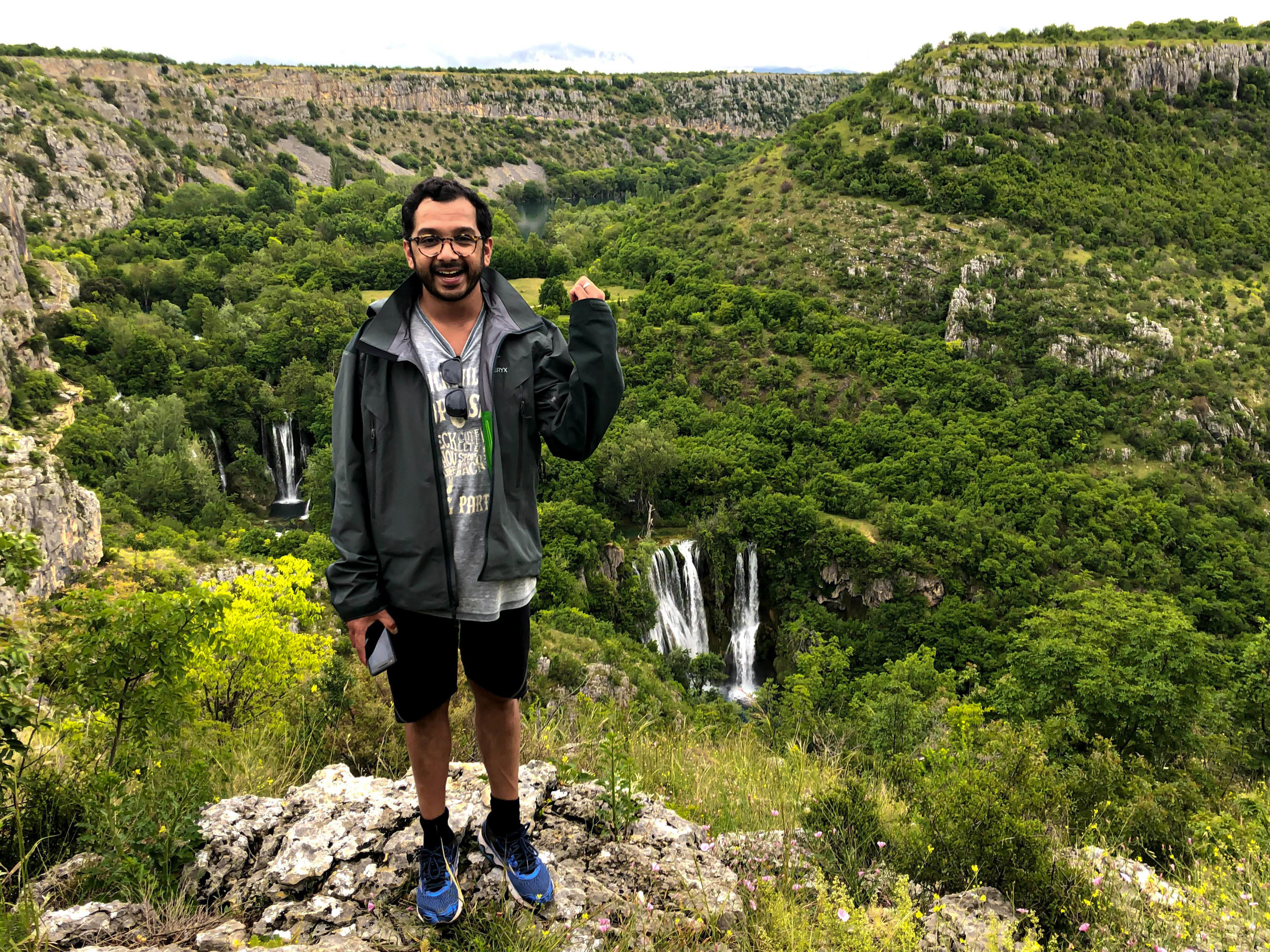
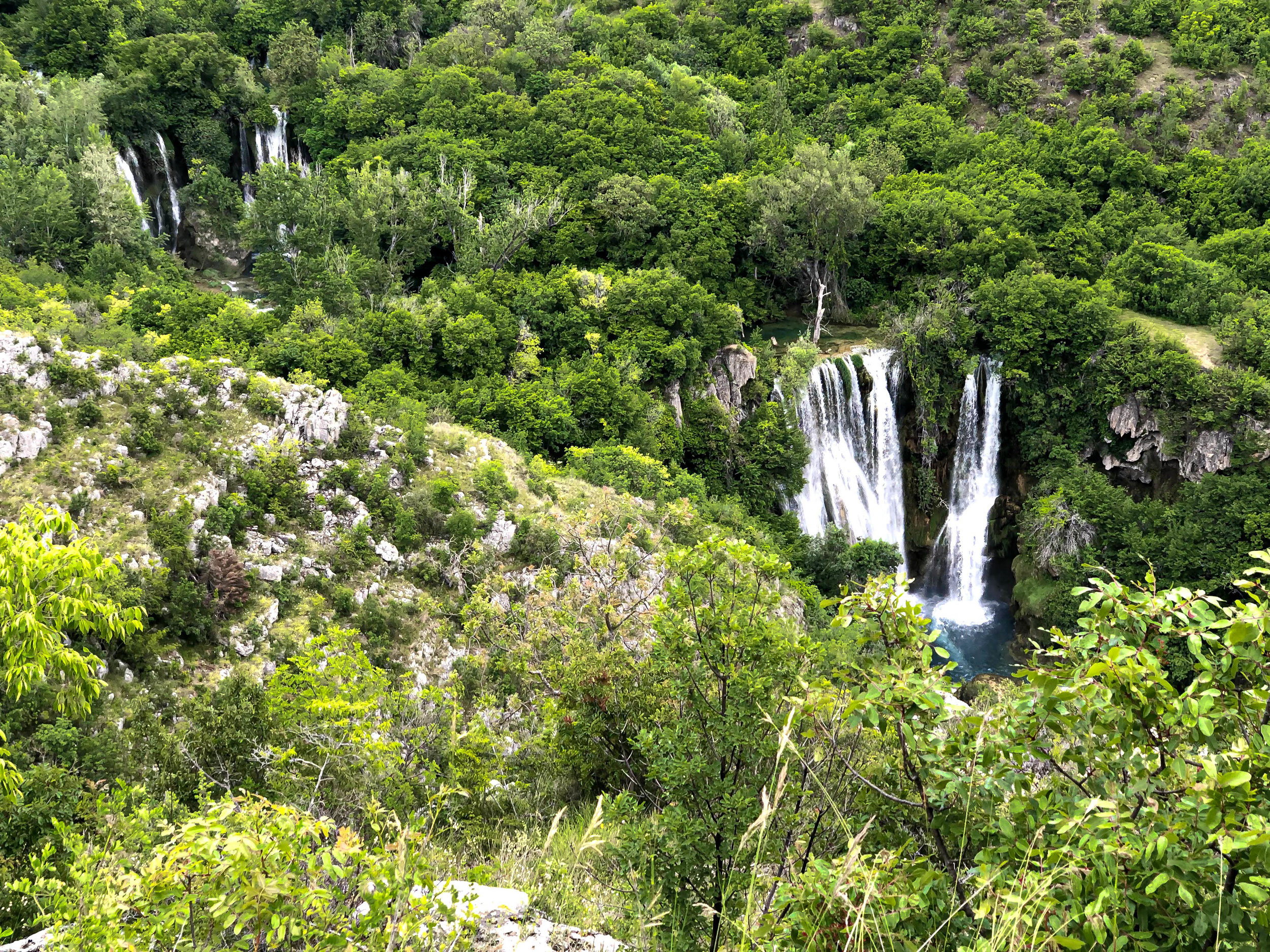
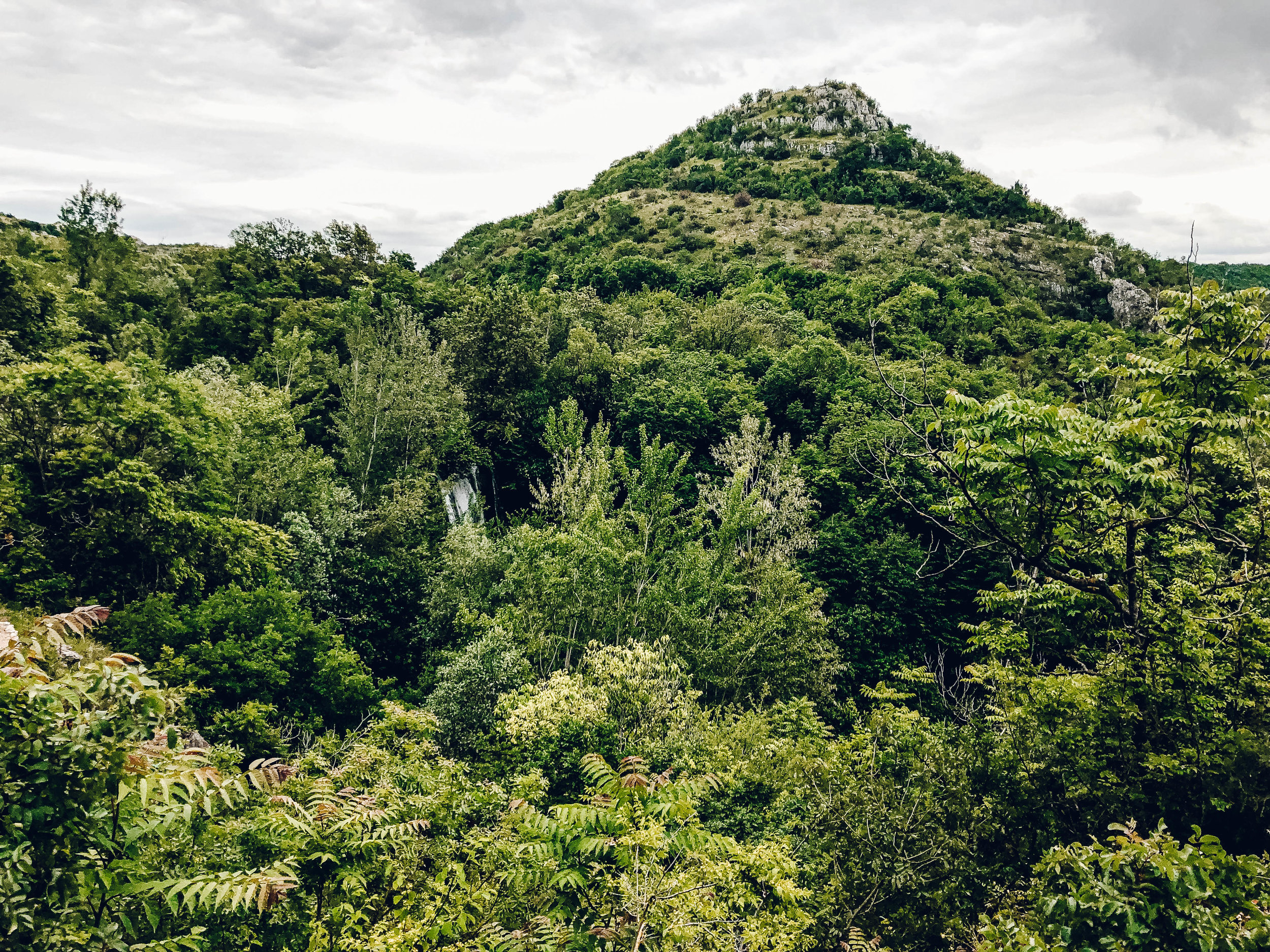
On the way to and from Burnum, we passed through the town of Knin. Ethnic Serbs made up about 86% of the population of Knin back in 1991, when Knin declared itself the capital of the unofficial Republic of Serbian Krajina. The Serbians held the town until 1995 when Croatia recaptured it, and most of the Serbs subsequently fled. The town of Knin is populated again (mainly with Bosnia refugees), the whole place feels like a ghost town. No one in the streets, no laundry hanging from windows, lots of gray empty shells of buildings on the outskirts of the town. Even though today there is a population of over 10,000, it still somehow felt grim and abandoned. Another piece of complicated history in this country.
Plitvice Lakes National Park
Whew! Krka National Park took up more time to write than I thought. Mainly because there are so many areas to check out other than the one popular place.
Now, Plitvice is different. The whole park is one big popular beautiful place. It’s called the Land of the Falling Lakes for a reason, and it’s arrestingly beautiful to behold - cascade after cascade after cascade connecting all the 16 different lakes of the park. We drove from Split, spent the night in Poljanka and visited Plitvice the next day. Plitvice is about a 2 hour drive from both Zagreb and Zadar.
I felt so lucky that we were able to visit the park at all. Remember all that rain I was complaining about earlier in the week? All of that rain equaled huge amounts of flooding for parts of Croatia. Our guesthouse host told us that last weekend, they closed the entire park. They have closed the Upper Lakes before, and the Lower Lakes before, but never in her memory had they closed the entire park. It was a good thing to keep in mind the next day when I began to get a bit frustrated with the crowds: remember, we are lucky to be here in the first place.
Because yes - it’s crowded.
We reserved entrance tickets for 8am (they are now limiting the amount of daily tickets, so reserve yours with the specific date and entrance time beforehand). The first major waterfall, the highest and biggest in the park, hits you straight in the face when you walk in. Strong start, Plitvice, strong start. From that far above, with the forests and mist and water bursting from the rocky walls, it really does look magical. And as if to drive the point home, a complete rainbow had spread all of its seven colors from end to end.
The park is divided into two main sections - the lower lakes and the upper lakes. We arrived from Entrance 1, which starts in the lower lakes. There are a couple different circuits to get through the park, organized by letter and color, ranging from a couple kilometers to 18. We chose K1 (circuit K, entrance 1) - 18 kilometers that would take us through the whole of Plitvice by foot. If you have the time and stamina, this is the choice to make. I had quite a difficult time finding any sort of reviews for this particular hike online, which I think speaks to its remoteness. You will have huge swaths to the park to yourself, and at Plitvice, that is a big deal.
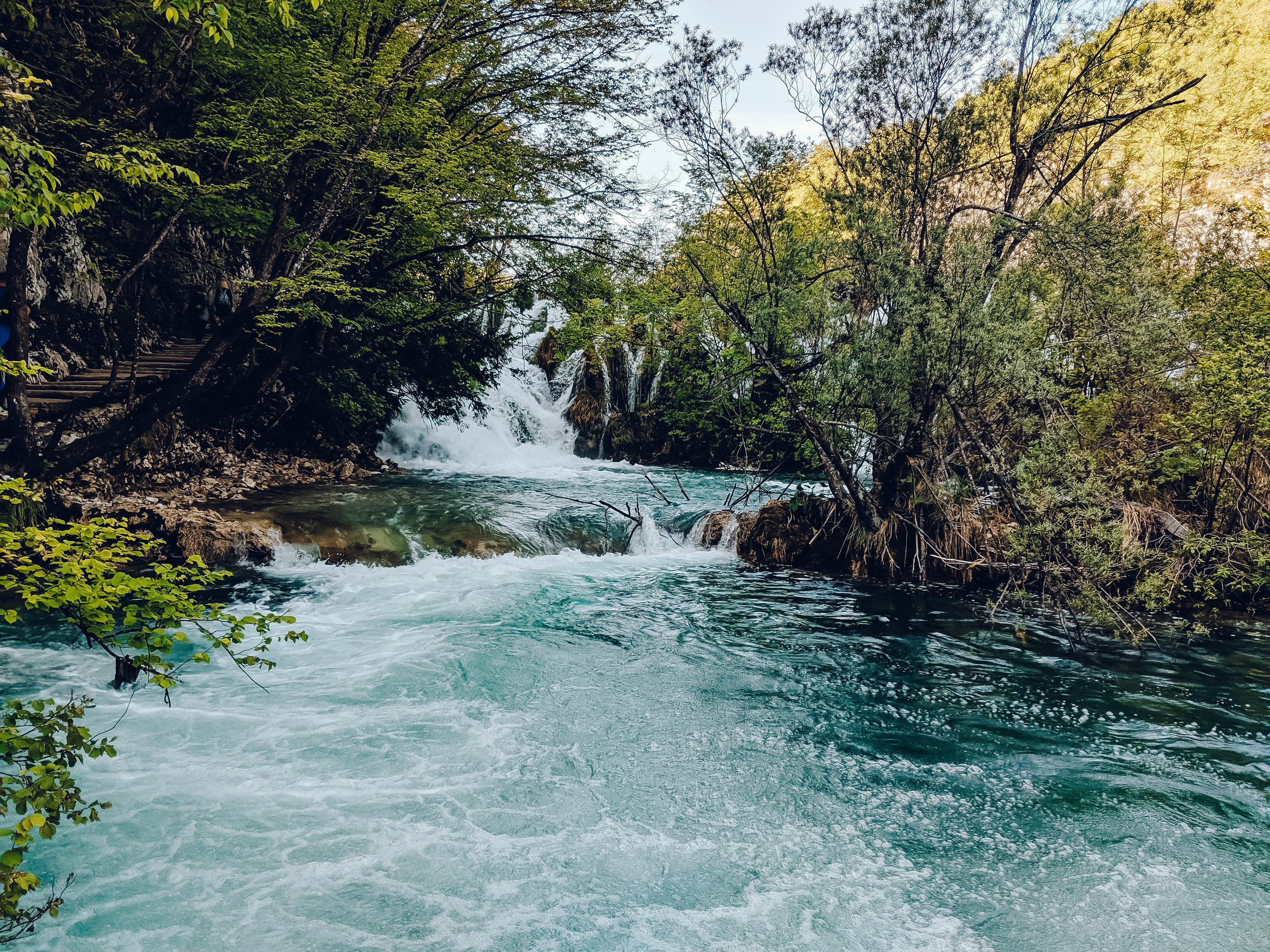
The K Trail
All of the trails connect and cross at some point. From entrance 1 to the first ferry boat station, there isn’t much of a difference of trails. At the station, the trail splits. Most crowds follow the wooden boardwalks through the lower lake falls, then take the boat across the to upper lake falls. Which means you can bid 98% of the crowds goodbye once you start on the K trail. This circuit essentially follows the perimeter of the lakes, and when I say perimeter, I mean it. The path is right at water level, so if it has been raining, the trail will not only be muddy - some parts might be completely submerged in water.
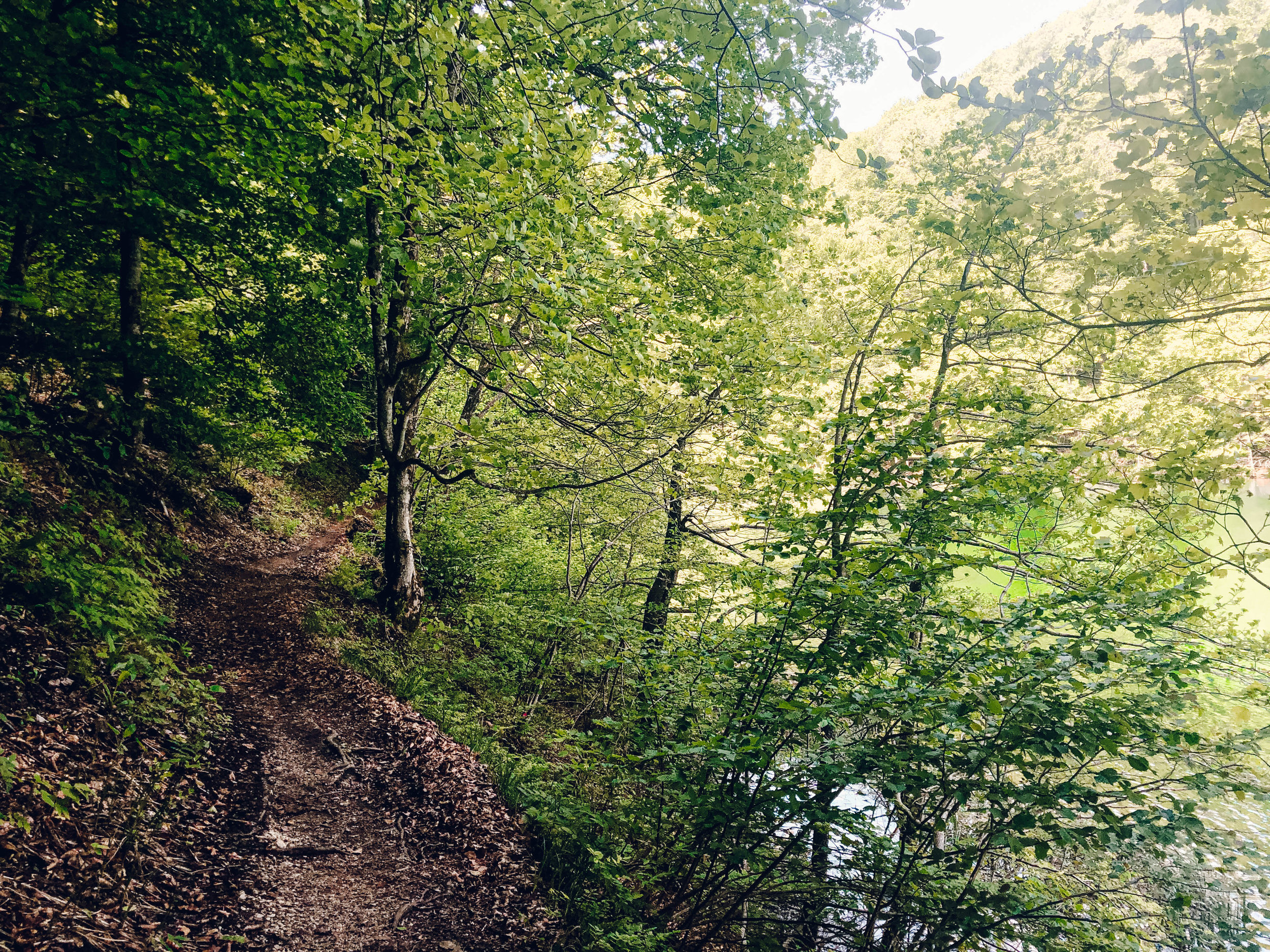
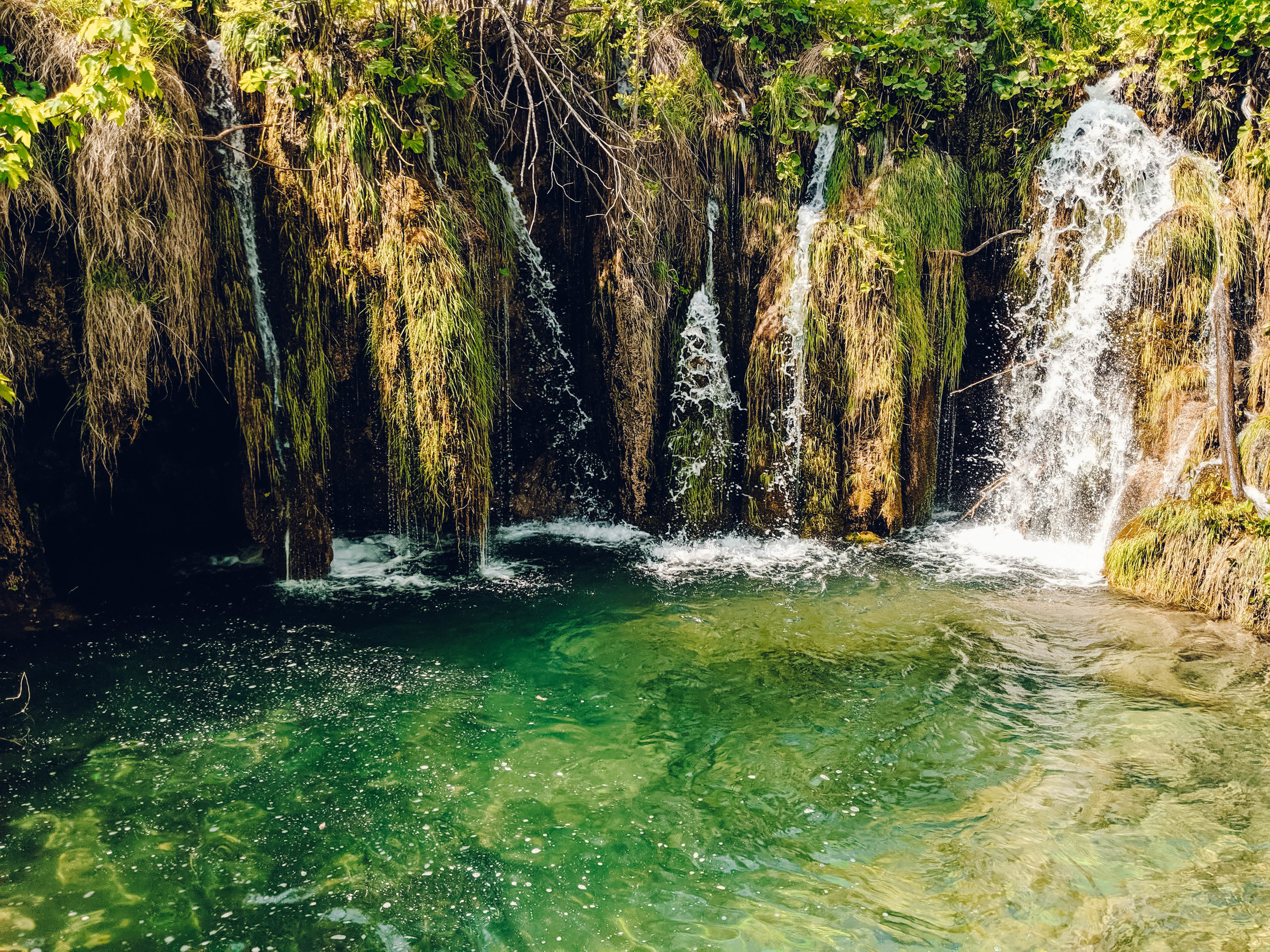
When we started on the K, there was one group of three ahead of us, two American guys and an Austrian girl. We all got to the first submerged path and stopped, stumped. Thinking (wistfully) that perhaps this was the only flooded section, one of the guys decided to take off his shoes and wade barefoot. Groupthink prevailed, and we all decided to follow suit. Conditions, however, didn’t improve. A couple came from the opposite direction. They had given up after about a kilometer of trudging, and turned around.
The 5 of us, shoeless in the muddy water, debated what to do. The Americans concluded that Raunaq was some sort of mountain man (“I like this guy. He seems to know what he’s doing!”), and we all decided to press forward. But with shoes on. I may have hippy tendencies, but I was not about to hike the next 15 kilometers barefoot in the mud. We ended up separating from the other three, but randomly enough, ran into them again a few days later in the Museum of Broken Relationships in Zagreb. We were all quite happy to see that the other group survived!
In some places, I was able to use exposed roots and branches to climb and balance on the banks, but after a while we both gave up and forded through the ankle-deep water. We did see one snake slithering in the water (shudders) and lots of salamanders and geckos, so fair warning if you are critter-squeamish: it’s a jungle out there. The trail began ascending once we reached the end of the upper lake, and that top viewpoint made our soggy, water-logged tennis shoes completely worth it.
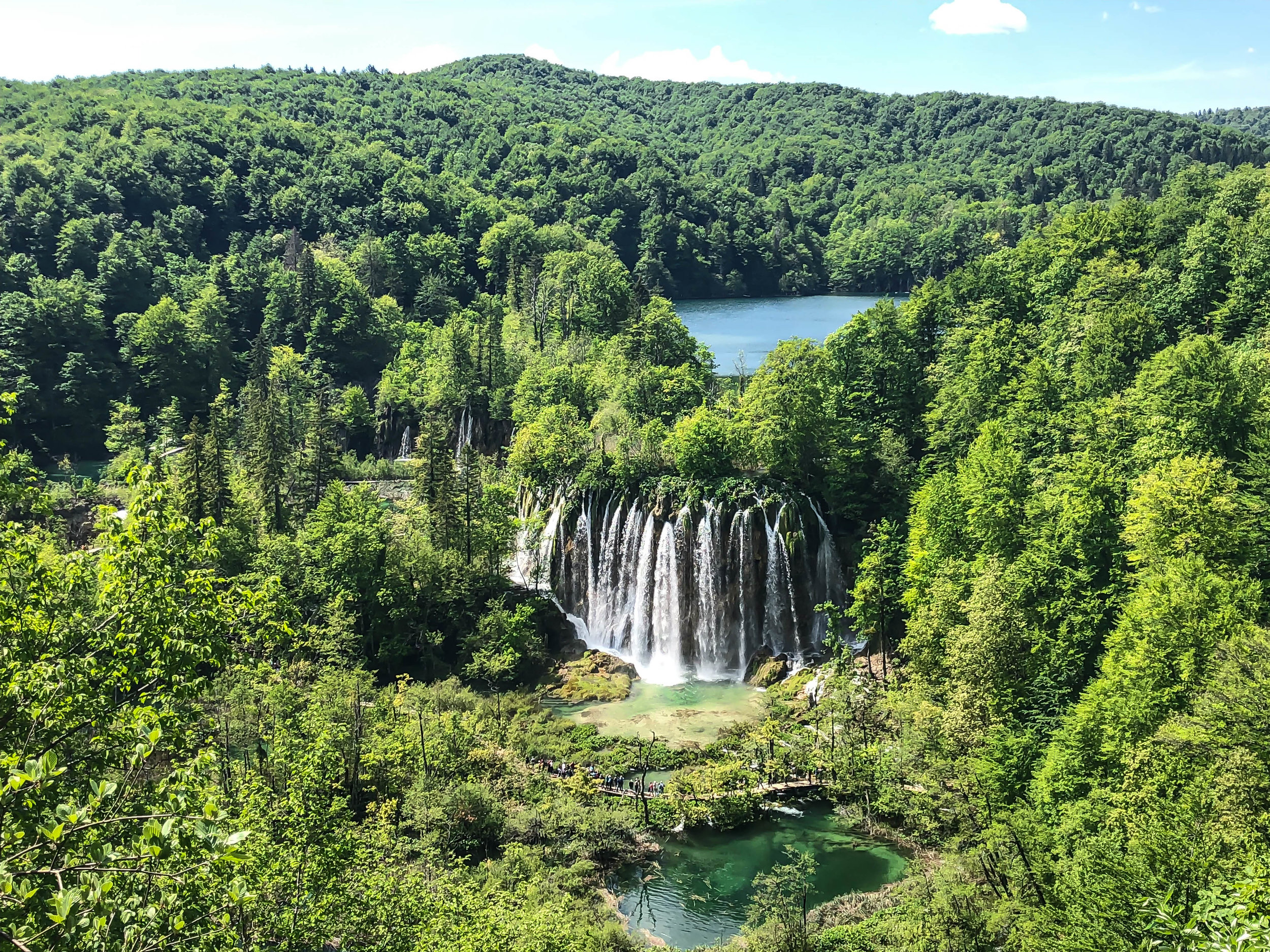

At some point, we got off trail and re-entered civilization, aka the crowded boardwalk sections. When I say “got off the trail,” what I really mean is that “we got completely and utterly turned around by the confusing and unclear trail signage.” Swiss trail signage has ruined us for life. However, it wasn’t the end of the world. These walkways criss-cross over the turquoise pools and past the smaller waterfalls, and even though you’ll be dealing with bigger crowds by then, the scenery is still extraordinary. Everything is vibrant and lush and other-worldly.
All the maps in Plitvice estimate the K to be around 6-8 hours, and I’d say that was pretty accurate. All in all, we got to the park at 8am and were back to our car by about 3:30pm, including a lunch break (please bring your own food, the food in the park is terrible) and a couple of wrong turns.
I really can’t stress the importance of getting to Plitvice early enough. Huge groups were still pouring through the entrance in the afternoon, and the boardwalks had turned into glorified conveyor belts of tourists slowly shuffling along, with more selfie sticks than you can imagine. I am still surprised that more people don’t get knocked off the boardwalks into the pools.
The walkways are pretty narrow, and while in theory they have room for two-way traffic, people seem to forget basic courtesies, like decorum and how to form lines and general consideration for others once they get in front of a waterfall. I don’t want to sugar-coat things. The crowds are bad, and relatively unavoidable no matter how hard you try. Which makes hiking the K trail all the more worth it. Godspeed to anyone visiting at peak travel season of July and August.
Krka vs. Plitvice?
So, if you have to choose one? It really depends on the weather, the time of year, your transportation and ultimately, the type of experience you want. If the weather is hot, and you have a car - I’d almost recommend Krka instead of Plitvice Lakes. At Krka, you can swim in the cooling waters of the main waterfall, which would be pretty epic. And if you have the flexibility of a car, it’s possible to really get off the beaten track and out into the depths of the park. You’ll be chasing waterfalls in the truest sense. But Plitvice is Plitvice. It’s the number-one tourist destination in Croatia for a reason, and all of the waterfalls, in all their glory, are at your fingertips. Well, yours - and 10,000 others.
More about the Great Croatian Road Trip:
Part 1 - Truffles in Tiny Towns: Istria













